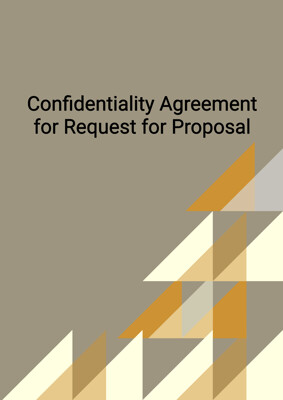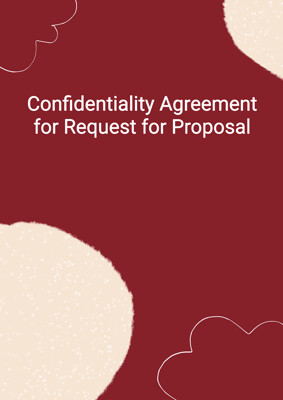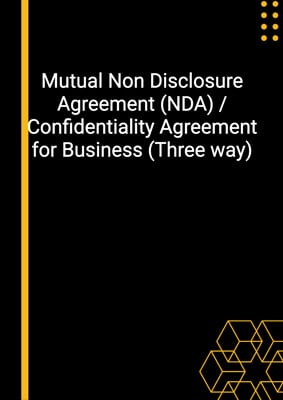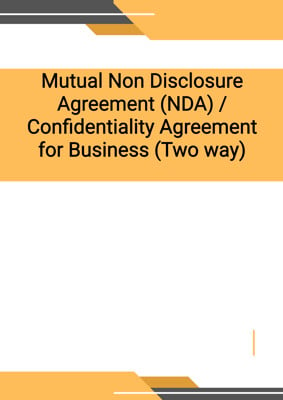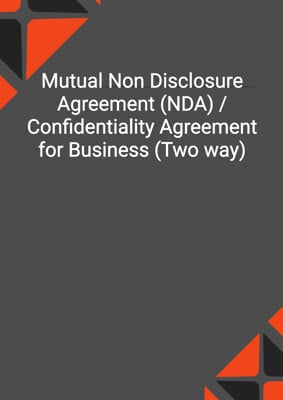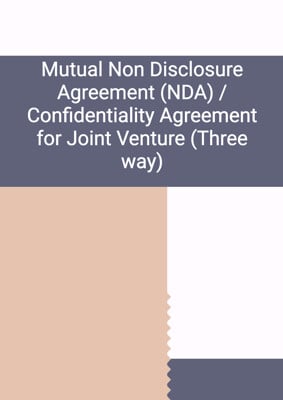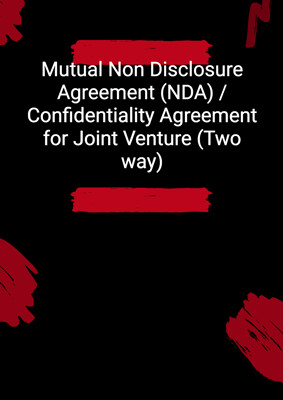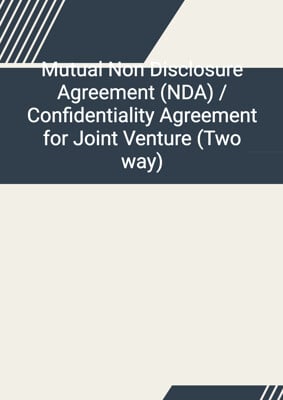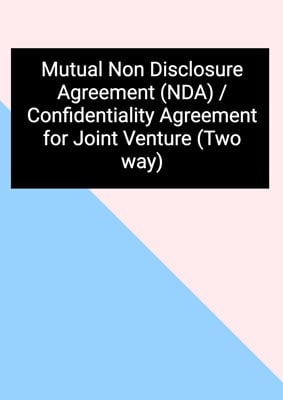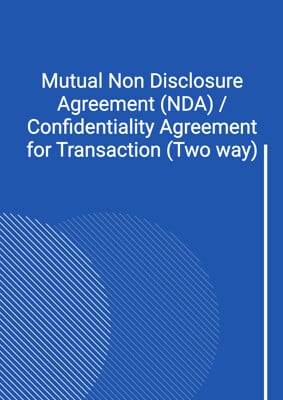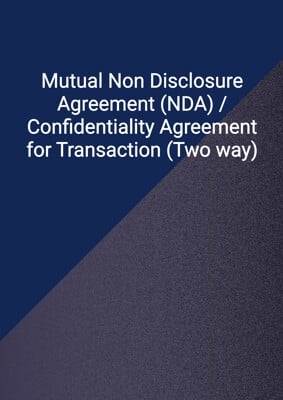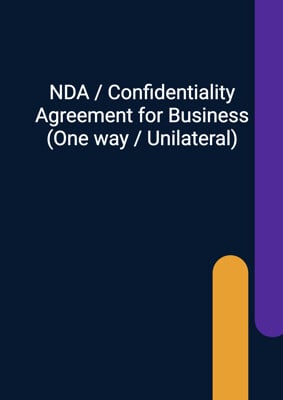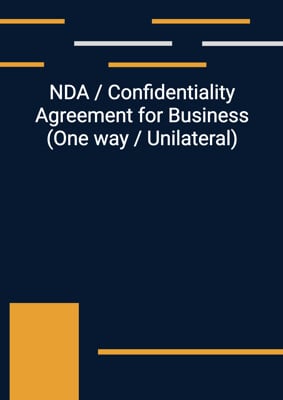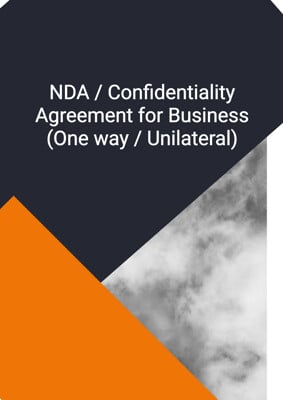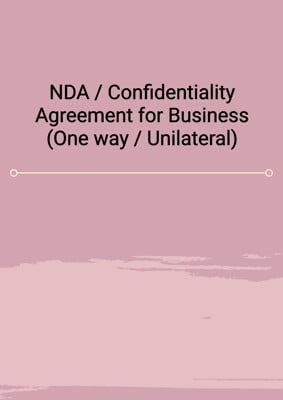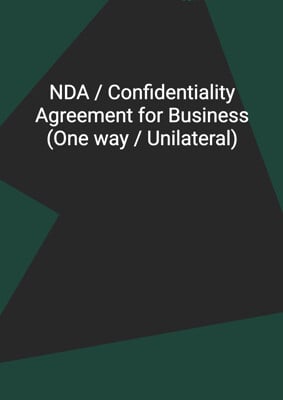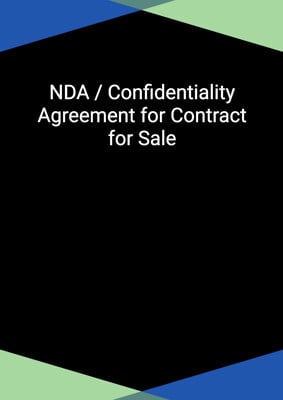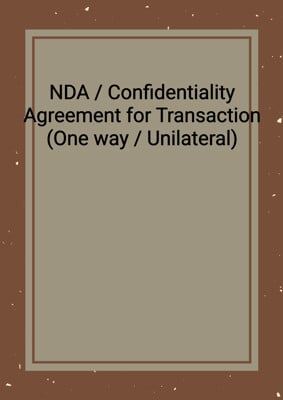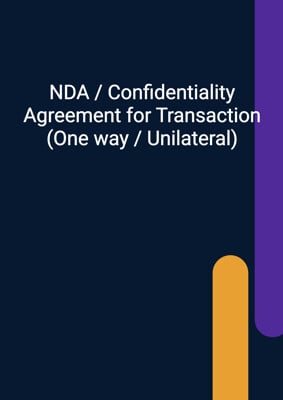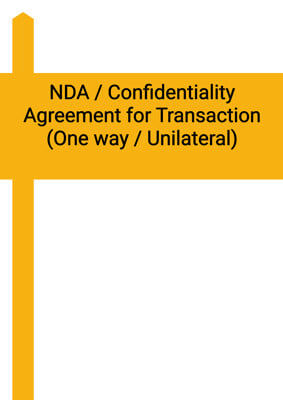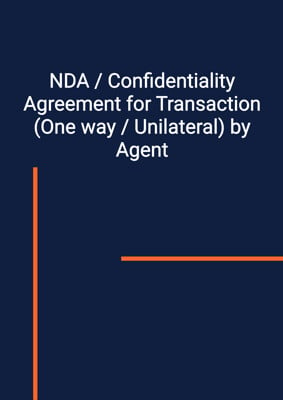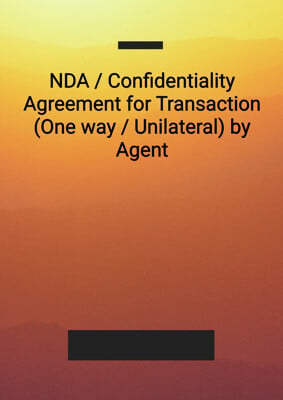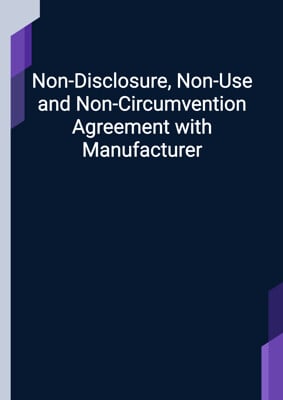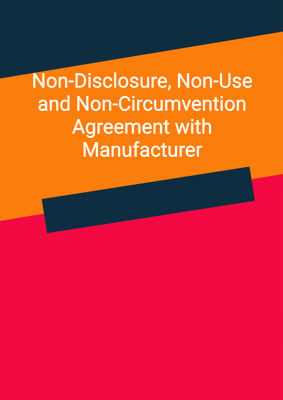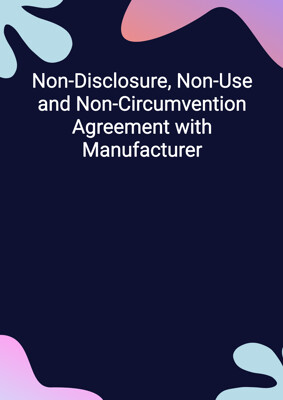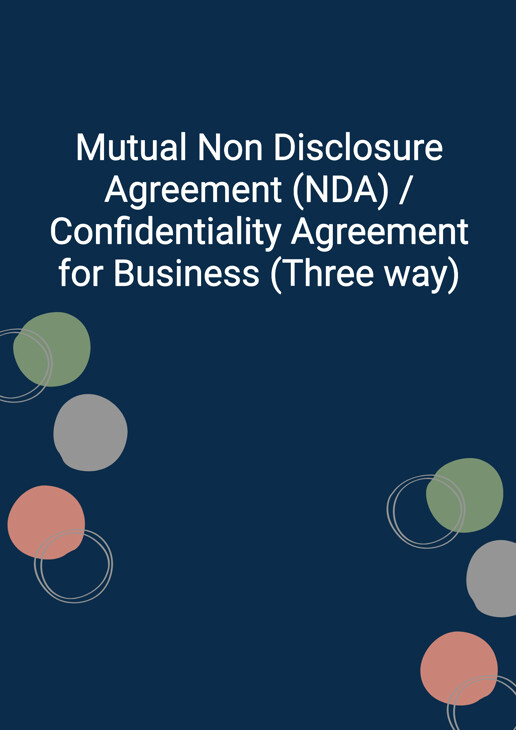
Mutual Non Disclosure Agreement (NDA) / Confidentiality Agreement for Business (Three way)
Loose / Light
Three way Non Disclosure agreement for discussion of business relationship. It imposes a mutual obligation of confidentiality on the parties who provide and receive information at the same time. This form is looser and easier to comply with by the parties.
How to Tailor the Document for Your Need?
01
Create Document
Fill in the details of the parties. You can click the "Fill with Member’s Information" button to complete it with information saved to your account.
02
Fill Information
Please fill in any additional information by following the step-by-step guide on the left hand side of the preview document and click the "Next" button.
03
Get Document
When you are done, click the "Get Document" button and you can download the document in Word or PDF format.
04
Review Document
Please get all parties to review the document carefully and make any final modifications to ensure that the details are correct before signing the document.
Document Preview
Document Description
The Mutual Non Disclosure Agreement (NDA) / Confidentiality Agreement for Business (Three way) is a document that establishes a confidential relationship between three parties. It is important because it allows the parties to exchange proprietary information while ensuring its confidentiality.
The entire document consists of several sections that cover different aspects of the agreement. The first section is the interpretation section, which defines key terms used throughout the agreement. This section ensures that all parties have a clear understanding of the terms used in the document.
The second section outlines the obligations of confidentiality. It specifies that each party must maintain the confidentiality of the information exchanged and use it exclusively for the agreed-upon purpose. This section also prohibits the copying or reproduction of any part of the information without prior consent.
The third section covers confidentiality measures. It requires each party to apply adequate security measures to protect the disclosed information from unauthorized access or use. This section also allows the disclosing party to request enforcement of these obligations by the receiving party.
The fourth section deals with excepted information. It states that the obligations of confidentiality do not apply to information that is already publicly available, previously known to the receiving party, disclosed by a third party, or independently developed by the receiving party.
The fifth section addresses the return of information. It requires each party to return or destroy all documents and materials containing the information upon request. This section also emphasizes the need to secure any stored information to prevent future access or copying.
The sixth section includes a disclaimer and warranty. It clarifies that the information provided does not guarantee accuracy, reliability, or completeness. It also limits the liability of the parties for any use of the information.
The seventh section covers the confidentiality of the agreement itself. It requires both parties to keep the existence and nature of the agreement confidential and obtain approval for any announcements or circulars related to the agreement.
The eighth section discusses remedies for breach of the agreement. It acknowledges that damages may not be sufficient and allows the disclosing party to seek injunctions or specific performance for any breach.
The ninth section addresses waiver. It states that a waiver of one breach does not waive any other breaches, and the rights and remedies provided in the agreement are cumulative.
The tenth section prohibits the assignment of rights or obligations under the agreement.
The eleventh section declares that the agreement represents the entire understanding between the parties and excludes any other representations or warranties.
The twelfth section clarifies that the agreement does not grant any rights to intellectual property except as expressly stated.
The thirteenth section specifies the governing law and jurisdiction for any disputes arising from the agreement.
The fourteenth section outlines the procedures for giving notices and service of the agreement.
The fifteenth section states that the agreement does not confer any rights on third parties.
Overall, this document provides a comprehensive framework for establishing a confidential relationship between three parties and protecting their proprietary information.
How to use this document?
1. Enter the names and principal places of business of all three parties in the agreement. This ensures clear identification of the parties.
2. Define the scope of confidential information: Specify the types of information that will be considered confidential and subject to the agreement.
3. Establish the purpose of the agreement: Clearly state the purpose of exchanging proprietary information and the intended business relationship between the parties.
4. Obligations of confidentiality: Each party must agree to maintain the confidentiality of the information and use it exclusively for the agreed-upon purpose.
5. Implement confidentiality measures: Ensure that the information is only disclosed to individuals who have a need to know and are aware of the obligations of confidentiality. Apply appropriate security measures to protect the information.
6. Exceptions to confidentiality: Clarify that certain information may not be subject to confidentiality obligations, such as publicly available information or information already known to the receiving party.
7. Return or destruction of information: Establish the process for returning or destroying all documents and materials containing the information upon request. Secure any stored information to prevent future access or copying.
8. Disclaimer and warranty: Make it clear that the information provided does not guarantee accuracy, reliability, or completeness. Limit the liability of the parties for any use of the information.
9. Confidentiality of the agreement: Keep the existence and nature of the agreement confidential. Obtain approval for any announcements or circulars related to the agreement.
10. Remedies for breach: Acknowledge that damages may not be sufficient and allow the disclosing party to seek injunctions or specific performance for any breach.
11. Waiver: Clarify that a waiver of one breach does not waive any other breaches. The rights and remedies provided in the agreement are cumulative.
12. Assignment: Prohibit the assignment of rights or obligations under the agreement.
13. Entire agreement: Declare that the agreement represents the entire understanding between the parties and excludes any other representations or warranties.
14. No license: Clarify that the agreement does not grant any rights to intellectual property except as expressly stated.
15. Governing law and jurisdiction: Specify the governing law and jurisdiction for any disputes arising from the agreement.
16. Notices and service: Follow the specified procedures for giving notices and service of the agreement.
17. No rights under contracts for third parties: Clarify that third parties have no rights to enforce any terms of the agreement.
This guidance provides a step-by-step approach to using the document and emphasizes the practical aspects of implementing the agreement rather than focusing on completing the document itself.
Not the right document?
Don’t worry, we have thousands of documents for you to choose from:

